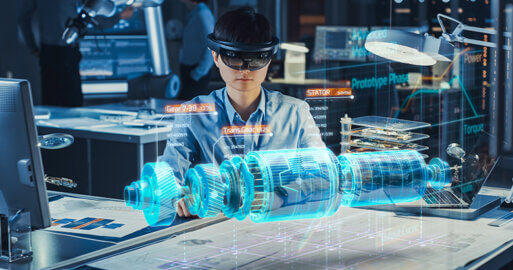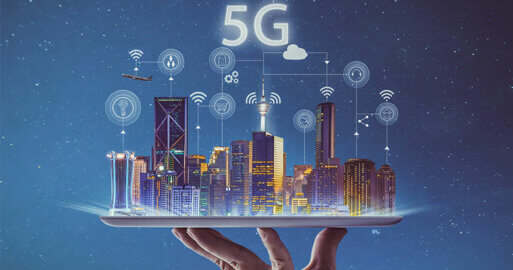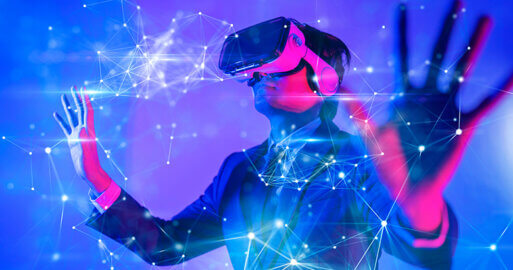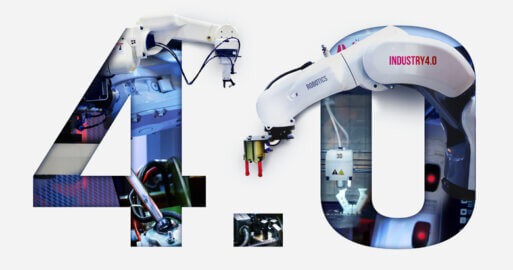Welcome to the Metaverse: An Introduction

Companies are constantly on the lookout for new ways to make their products known or to strengthen customer loyalty. In the future, there will probably be no getting around the metaverse! It offers countless possibilities and opportunities for both end consumers and companies – so definitely take a look, but start with it today?
Welcome to the Metaverse: The dawn of a new age
In this blog, we’ll cover basic information about the metaverse. In the course of further digitalization of markets, but also as a space for the “cyber” in cyber-physical systems of the IIoT (Industrial Internet of Things), such virtual spaces could gain in importance and also dramatically change business interactions. With this introduction, we embark upon a discussion of these new phenomena, which will be supplemented in future blogs. For example, in other blogs, we explain what are potential vulnerabilities and cyber risks and show how to ensure cyber security in the Metaverse, or what the metaverse can look like for retail and CPG companies.
What is the Metaverse?
The metaverse is a virtual world where people can interact with each other. It is basically a digital place where people come together to learn, play and work. The big difference between the metaverse and other online platforms is that it is completely virtual and therefore immersive and not just text-based. In other words, users can decide for themselves how they want to create their environment: from choosing an avatar to creating a 3D model for their virtual environment.
But the metaverse also represents the fact that our real and digital lives are becoming increasingly intermingled. In the metaverse, real experiences are to be made with a virtually extended real world, and thus a space for cyber-physical systems is to be opened up.
However, there is currently no uniform definition of the metaverse, as it is only in the definition, development or construction phase. Currently, there are already metaverse platforms; the “one, big metaverse” does not yet exist. Facebook’s parent company, Meta, has taken the lead in this movement, and is already investing gigantic sums in the transfer and realignment of its social media activities into a virtual space.
The core attributes of the Metaverse
Venture capitalist Matthew Ball defines the following core attributes in his essay.1 The metaverse will:
- be constant. It cannot be reset, paused or terminated, but simply continues indefinitely.
- be synchronous and live, even if scheduled and completed events will occur, it will exist consistently and in real time.
- not set an upper limit on the number of concurrent users. Anyone can be a part of the metaverse and participate in a particular event/place/activity together, at the same time and with individual agency.
- be a fully functioning economy. Individuals and businesses will be able to create, own, invest, sell and be rewarded for an incredibly wide range of “work” that generates “value” recognized by others.
- be an experience that spans both the digital and physical worlds, private and public networks and experiences, and open and closed platforms.
- offer unprecedented interoperability/combinability of data, digital objects/assets, content, etc. across all these experiences.
- be populated by “content” and “experiences” created and operated by an incredible variety of contributors, some of whom may be independent individuals, while others may be informally organized groups or commercially oriented companies.
Metaverse in Web 3.0
Many consider it a possibility that the metaverse could replace today’s mobile Internet.2 If we divide the Web into certain development stages, we can describe today’s development as the end of Web 2.0 and the beginning of Web 3.0.3
Originally, Web 1.0 connected information (especially web pages) at unprecedented speed and on an unimaginable scale. With Web 2.0, the smartphone entered the Internet and our everyday lives, enabling us to connect people directly, completely independent of location, and massively fueling the development of social media and e-commerce. Now we are moving on to Web 3.0, which networks people, places and things, or people, spaces and goods, end-to-end. The human-machine interface, which offers humans an opportunity for interaction in a superimposed Internet of Everything (IoX), will probably itself be digital. We will exist virtually, in addition to physically, and project our environment into a virtual world with the help of augmented reality technology (AR). Whether this stage of development will be reached with the third edition of the Web or whether this is merely a first step in the direction of human-machine interfaces is of secondary importance.
Where does the metaverse come from?
In 1991, the author Neal Stephenson published his science fiction novel “Snow Crash,” naming the term metaverse for the first time.4 In it, the metaverse is a kind of global virtual reality in which people act as avatars. Similar to today’s multiplayer online role-playing games, there is no set game, goal or high score. Rather, the metaverse is designed as a digital alternative to the physical world.5
The development of the metaverse began over 20 years ago when the first VR headsets and 3D glasses created immersive digital interaction spaces. In the process of networking with the IoT/IIoT, these techniques were applied to make only individual areas of the virtual reality tangible. Concepts such as augmented and mixed reality were able to open up new application areas around digital twin and smart services, but mostly remained stuck at the stage of promotion and feasibility studies outside of research and development. Today, all these techniques have become a significant part of the metaverse.
How does the metaverse work?
The leading technology in the metaverse is undoubtedly Mixed Reality (XR or MR), which is composed of Virtual Reality (VR) and Augmented Reality (AR).6 VR is a technology that allows full immersion in virtual environments. If you wear VR glasses, it looks as if you are in a completely different room – but all visual impressions come from the computer. AR, in contrast, is a technology that allows reality-based environments to be enhanced or modified with computer-generated information. Although AR typically retains physical objects in the environment, digital elements can be added to enhance or complement those objects. AR is effectively the new lens through which any form of digital information can be incorporated into the real world.
The augmented reality of the metaverse allows us to communicate with other people, do things and visit places without actually having to physically be there. To make the metaverse a reality, other technologies, such as blockchain and artificial intelligence, are being used. In addition, the metaverse also benefits from advancing connectivity, such as via 5G or edge computing. As a result, the metaverse is able to move people in a virtual environment regardless of location, similar to smartphones, via 3D glasses.
How do you get into the metaverse?
Today, access to the metaverse is relatively simple but still relatively bulky: A smartphone or computer with an Internet connection (WLAN) and VR goggles, ideally including a VR controller, are required.7 Appropriate software allows the user to log in to the virtual world of the metaverse and interact, usually from a fixed point, to deal with the tangled cables of old models or to reduce the risk of injury in the case of the newer, wireless devices.8
Conclusion: Diving into a new age of interaction
With the metaverse, we are indeed entering a new age of digital communication and interaction and this age, with all its advantages and disadvantages, has only just begun. As technology continues to develop, the virtual world will evolve even further and offer even more possibilities than it already does today!
The metaverse is a fascinating world that will gain traction through the combination of cloud computing, edge computing, IIoT and 5G. The convergence of the real and digital worlds is being driven by these technologies, bringing the vision of immersive cyberspace (again)9 closer. Our metaverse blogs are an opportunity to highlight the significance of these innovations, as well as their opportunities and risks, especially for B2B integration. In the next blog, “Cybersecurity in the Metaverse,” we’ll go into more detail about this aspect.
1 Vgl.: Vgl.: Matthew Ball: The Metaverse: What It Is, Where to Find it, and Who Will Build It
2 Vgl.: Im Wandel: „Unsere Vision ist es, dass das Metaversum Nachfolger des mobilen Internets wird“
3 Vgl.: Web 1.0 Web 2.0 und Web 3.0 – Was sind die Unterschiede?
4 Vgl.: Snow Crash”: Neal Stephensons Buch-Klassiker von 1992 entwirft das “Metaverse
5 Vgl.: https://t3n.de/news/metaverse-erklaert-hype-zukunft-1419141
6 Vgl.: World of VR: Metaversum(abgerufen am 10.03.2023).
7 Vgl.: Netzwelt: Metaverse: Was ist das und wie kommt man da rein? (abgerufen am 10.03.2023).
8 Vgl.: Fuchteln, boxen, fliegen, arbeiten: KURIER testet das Metaverse. Was taugt die VR-Brille Quest 2 wirklich?
Thank you for your message
We appreciate your interest in SEEBURGER
Get in contact with us:
Please enter details about your project in the message section so we can direct your inquiry to the right consultant.
Written by: Alexandra Pörner
Alexandra studied German language and literature in Mannheim and Waterloo (Canada). As part of the editorial team at SEEBURGER she combines her passions for language and travel on extensive workations, which she particularly enjoys capturing on camera. When she's not traveling in other climes, she likes to join meetings with a coconut latte at the coffee bar.





